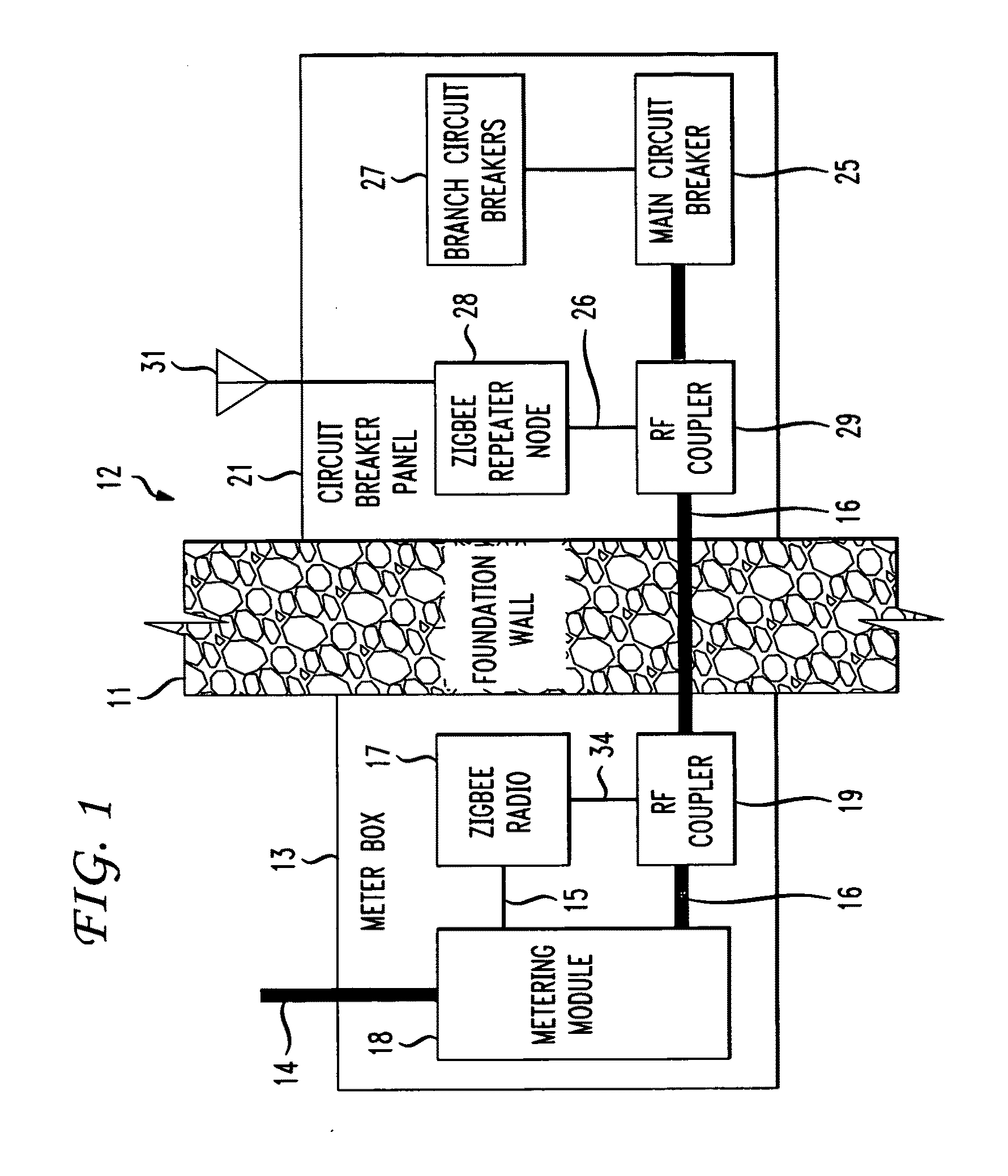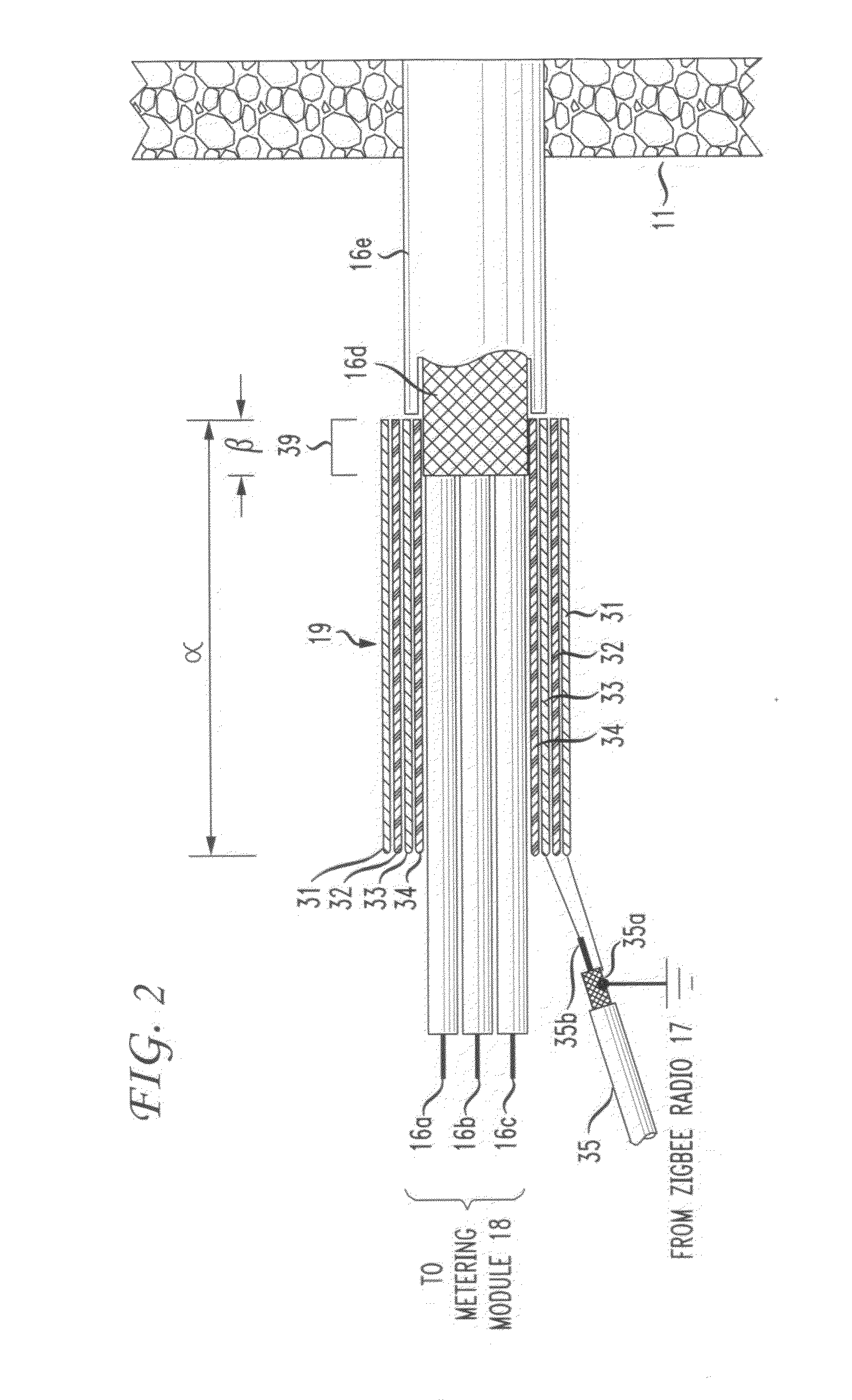Technique for conveying a wireless-standard signal through a barrier
a wireless-standard signal and barrier technology, applied in the direction of waveguides, electrical devices, coupling devices, etc., can solve the problems of carrier signals being interfered, signals not being able to adequately penetrate the building structure to reach the wireless receivers inside, etc., and achieve the effect of increasing the power output of the transmitter
- Summary
- Abstract
- Description
- Claims
- Application Information
AI Technical Summary
Benefits of technology
Problems solved by technology
Method used
Image
Examples
Embodiment Construction
FIG. 1 shows a portion of a foundation wall 11 of a building or other structure, having an interior area denoted as 12. Attached to the exterior side of foundation wall 11 is a meter box 13 into which comes a service entrance cable 14 carrying derives power from, say, a utility pole near the building via a so-called “drop” and a service-entrance cable that terminates at meter box 13. Service entrance cable 14 terminates on a watt-hour meter (not shown) within a metering module 18 which is, in turn, mounted within meter box 13. A service cable 16 connected to (typically) the base of the watt-hour meter extends through foundation wall 11 supplies electrical power to main circuit breaker 25 mounted on circuit breaker panel 21 mounted on the interior side of foundation wall 11. Main circuit breaker 25 supplies power to individual branch circuit breakers 27 which, in turn, supply power to outlets, fixtures and appliances via 15- or 20-ampere circuits comprising 12 AWG or 14 AWG conductor...
PUM
 Login to View More
Login to View More Abstract
Description
Claims
Application Information
 Login to View More
Login to View More - R&D
- Intellectual Property
- Life Sciences
- Materials
- Tech Scout
- Unparalleled Data Quality
- Higher Quality Content
- 60% Fewer Hallucinations
Browse by: Latest US Patents, China's latest patents, Technical Efficacy Thesaurus, Application Domain, Technology Topic, Popular Technical Reports.
© 2025 PatSnap. All rights reserved.Legal|Privacy policy|Modern Slavery Act Transparency Statement|Sitemap|About US| Contact US: help@patsnap.com



